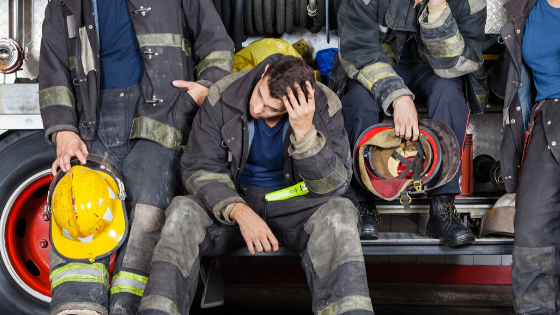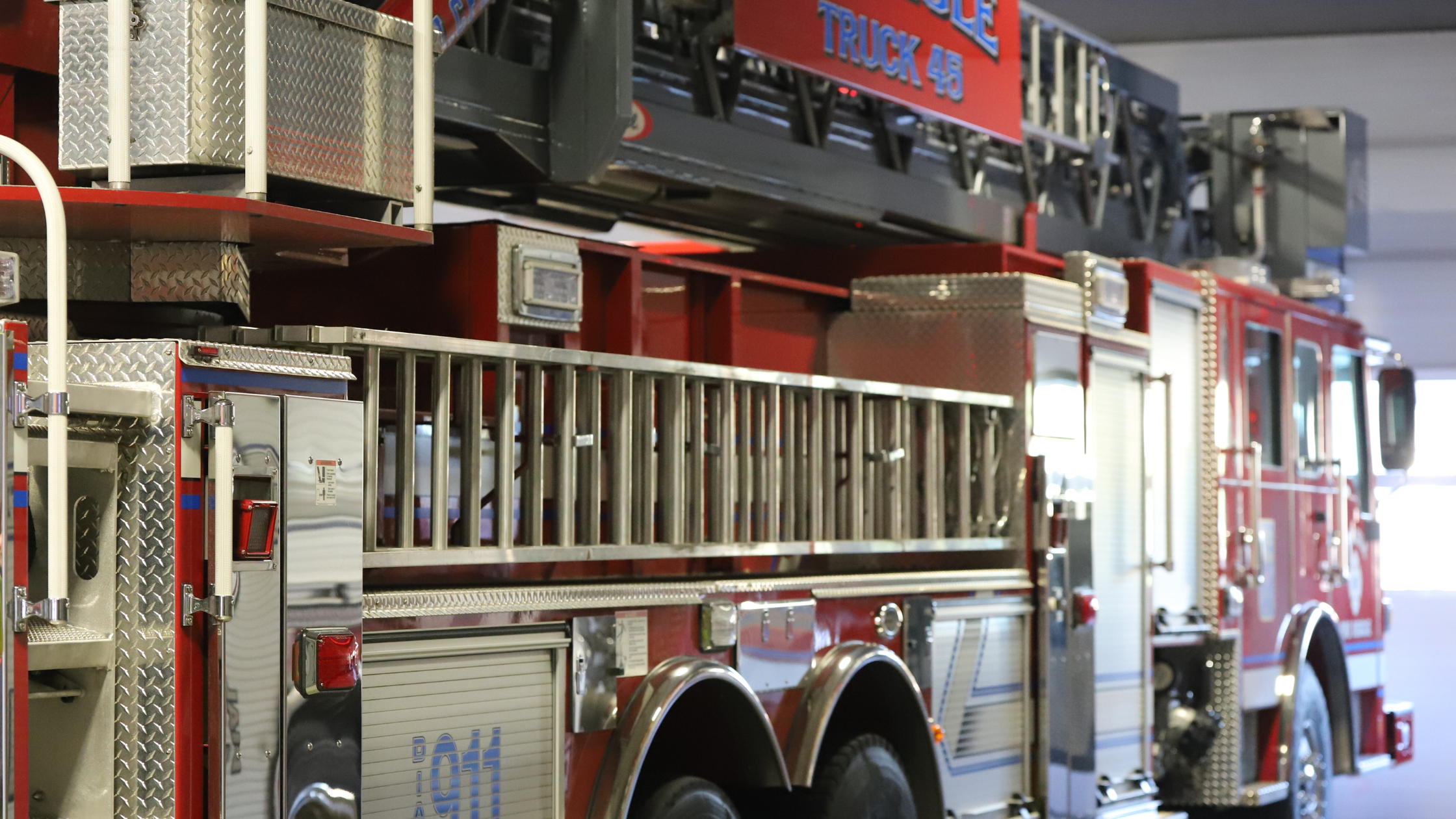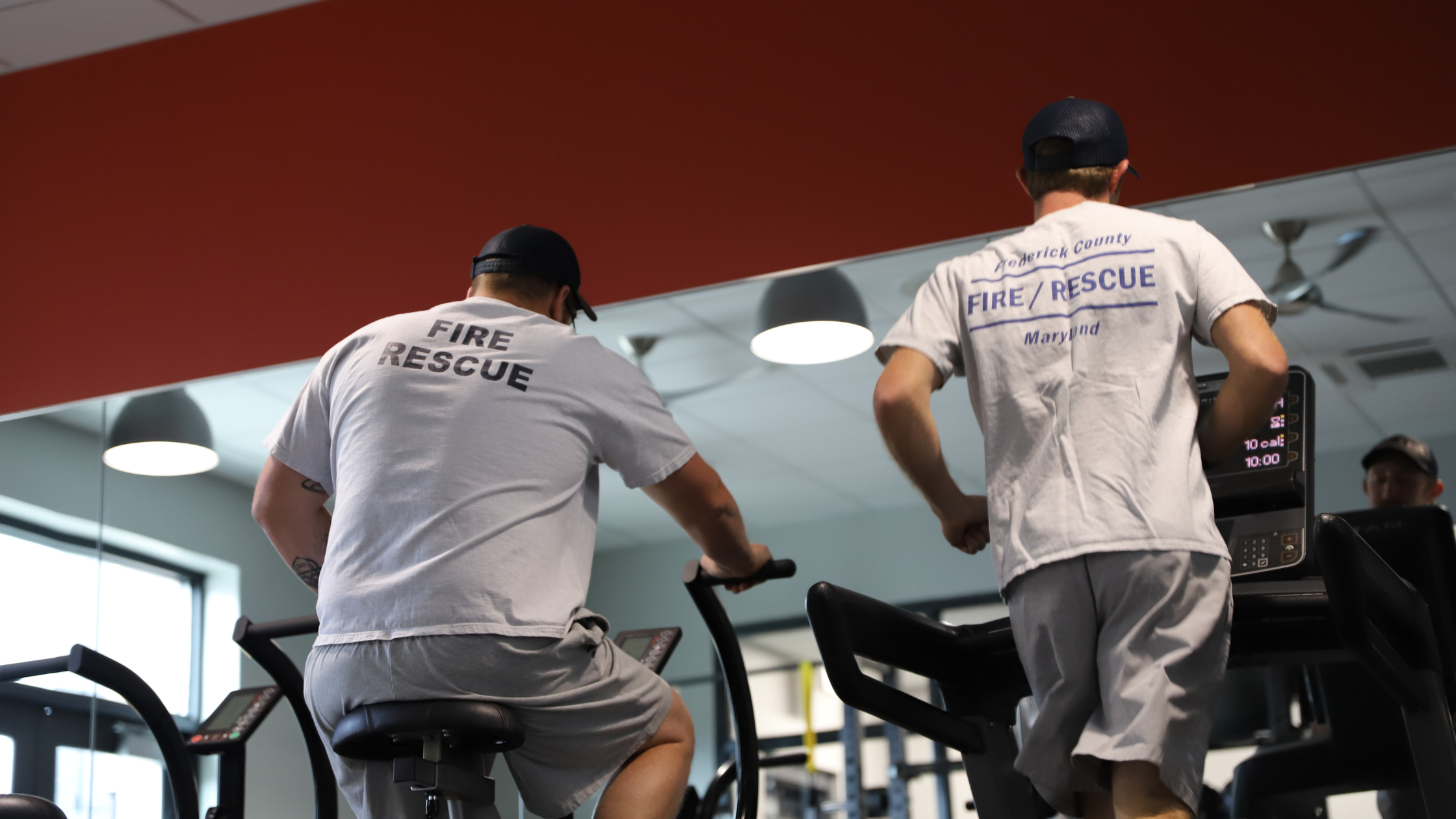We’re breaking down the 5 biggest threats firefighters and emergency medical technicians face + discussing 3 programs to help reduce those risks.
Fires, natural disasters, active shooter incidents, roadside accidents, death – being exposed to hazards is an inherent part of your job; but that doesn’t mean there aren’t consequences. When most people think of the risks that emergency responders face, they think of the physical threats that come with the job – but you know all too well that the dangers go far beyond that.
What is behavioral health + why is it relevant to fire departments and ambulance agencies?
Substance Abuse and Mental Health Services Administration (SAMHSA) describes behavioral health as anything that contributes to your mental health, resilience and wellbeing. Simply put: it’s the full range of your mental and emotional health.
Behavioral health should be a concern for every emergency service organization as SAMHSA reports that 30% of first responders develop behavioral health conditions compared with 20% of the general population.
Why are emergency responders at an increased risk for behavioral health concerns?
Everyone Goes Home, an initiative by the National Fallen Firefighters Foundation, outlines four behavioral health risk factors that responders face that the general public rarely does:
- Being exposed to traumatic events
- Remaining “on alert” – even while resting
- Covering sleep-disruptive shifts
- Being separated from family and friends for unusual periods of time due to shift work
While these things might just seem like they’re “a part of the job”, they shouldn’t be taken lightly and can lead to serious concerns without proper mitigation.
5 Behavioral health concerns for firefighters and EMTs – plus a few ways to help reduce your risks:
As outlined by the Fire and EMS Personnel Behavioral Health Concerns booklet on vfis.com – the top behavioral health risks that responders face can be broken-down into five categories.
1. Stress
While stress is a normal bodily function – too much can be deadly. According to the American Institute of Stress, short-term stress can leave us anxious, fearful and struggling to sleep. But long-term stress can trigger heart attacks, strokes and suicidal thoughts.
Here are a few tips to help you manage stress:
- Get enough sleep (visit the SleepFoundation.org to find recommendations based on your age and activity level, but it's probably about 7-9 hours)
- Exercise regularly – the American Heart Association suggests 150 minutes of moderate-intensity aerobic activity or 75 minutes of vigorous activity (or a combo of both) throughout the week
- Take time to relax
- Take care of your body – and listen to its needs
- Ask for help
2. Workplace Violence
This includes encountering both physical and non-physical aggressive behavior, intimidation and possession of weapons in the workplace.
Teach your crew about what to do in potentially violent situations and implement best practices, including:
- Talking about the warning signs of workplace violence and how to recognize them
- Teaching situational awareness as a vital tool
- Reminding your crew not to place themselves into potentially violent situations, and to escape the scene and contact local law enforcement whenever possible
- Ensuring that anyone who intervenes in a violent situation has been cleared to do so
- Contacting a local specialist to educate your team and offer additional techniques
3. Drug and alcohol use and addiction
This includes long-term pathological use of drug, alcohol, gambling, sex and other addictions. SAMHSA reports that 20.3 million people above the age of 12 had experienced a substance use disorder in the past year – and that many people look to substances as a way to cope after experiencing a disaster or emergency.
Some ways you can help prevent and combat addiction in your emergency service organization include:
- Requiring pre-hire physical exams and annual exams – as well as offering the opportunity for treatment
- Training your crew on healthy coping mechanisms and recognizing the signs of substance abuse
- Offering counseling services for all types of challenges and developing a peer support program
4. Depression and suicide
According to the International Association of Fire Fighters (IAFF), firefighters are 3 times more likely to die by suicide than in the line of duty, and a survey by the National EMS Management Association concluded that EMS professionals contemplate suicide at nearly 10 times the rate of the average American adult.
You can help by listening, looking and learning:
- Ask your crew how they are doing – and really listen to what they have to say. Be supportive and think of productive ways you can help.
- The IAFF says some signs to look out for include feelings of hopelessness, pessimism, guilt, restlessness, irritability or worthlessness, loss of interest, lower energy, difficulty sleeping or waking, inability to concentrate or make decisions, appetite or weight changes and suicidal thoughts.
- Learn about resources that are available to your team, like NVFC Share the Load Helpline 888.731.3473, and keep yourself up-to-date on the latest recommendations.
5. PTSD
Post-traumatic Stress Disorder (PTSD) is described by the American Psychiatric Association as a psychiatric disorder that can occur in people who have gone through a traumatic event — which you regularly experience as a part of your duties. Plus, FireRescue1 reports that there additional experiences that could put a responder at an even higher risk including witnessing ongoing trauma, being in a leadership or supervisory role, witnessing death during a traumatic event, having a mental health issue like anxiety, addiction or depression, lacking social or family support and working long hours without recovery time.
Two ways to help your team include:
- IAFF says to watch for symptoms like intrusive memories, avoidance behaviors, increased arousal and reactivity, and negative changes in mood and thought.
- After a significant event occurs, talk it out as a group and offer the option to talk to a professional. Remember that for some, PTSD could be immediate; but for others it could take years.
3 Programs to Help Combat Behavioral Health
In a recent survey by Firehouse, 92% of firefighters reported that they would not seek behavioral healthcare because of the associated stigma. Without dedicated programs that raise awareness about these issues, outline best practices, start conversations, create a culture of wellness and establish guidelines – it's unlikely that your team will take the time you need to dedicated to these concerns or that your members would reach out should they need or want assistance.
Our free and downloadable Fire and EMS Personnel Behavioral Health Concerns booklet encourages every organization to implement these programs to provide ongoing support:
- A behavioral health program. This should set standards for screenings, train personnel to understand the risks and symptoms, implement policies for reporting behavioral health concerns, outline employee assistance resources and establish a counselor, chaplain and/or peer support group.
- A wellness program. A program that is dedicated to the health, fitness and wellbeing of your responders, motivates your team to be their best selves and is tailored to your team local department.
- A peer support program. This allows members to come together to talk about what they’re going through and provide support. The key here is to select a leader who has a desire to help their teammates, is knowledgeable about the risks and resources available, understands the types of events that could trigger behavioral health or wellness concerns, is a good listener and leads the program with ongoing support.
You joined the service to serve and protect your community – but you can’t be the best version of yourself if you ignore your own needs. Talk to you crew, look out for the signs, raise awareness and take action. For more information and tips to help you create behavioral health and wellness programs in your department – download the full guide—for free—at vfis.com.
DISCLAIMER
The information contained in this blog post is intended for educational purposes only and is not intended to replace expert advice in connection with the topics presented. Glatfelter specifically disclaims any liability for any act or omission by any person or entity in connection with the preparation, use or implementation of plans, principles, concepts or information contained in this publication.
Glatfelter does not make any representation or warranty, expressed or implied, with respect to the results obtained by the use, adherence or implementation of the material contained in this publication. The implementation of the plans, principles, concepts or materials contained in this publication is not a guarantee that you will achieve a certain desired result. It is strongly recommended that you consult with a professional advisor, architect or other expert prior to the implementation of plans, principles, concepts or materials contained in this publication.
Related posts
How you can help protect your most important asset: your people, and how to help them set up their insurance benefits so that they reflect their wishes.
Agreed value eliminates many of the downsides that emergency service organizations may experience from traditional auto policies.
Consider this multi-faceted approach to help your emergency services personnel prevent, cope with and recover from behavioral health concerns.










Submit a Comment